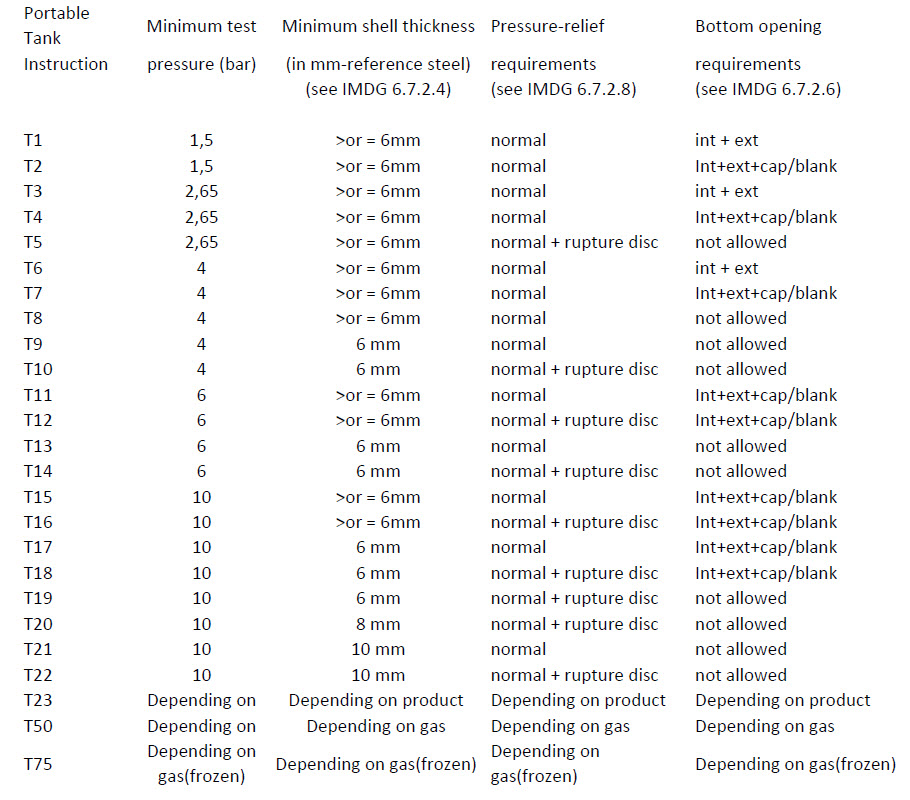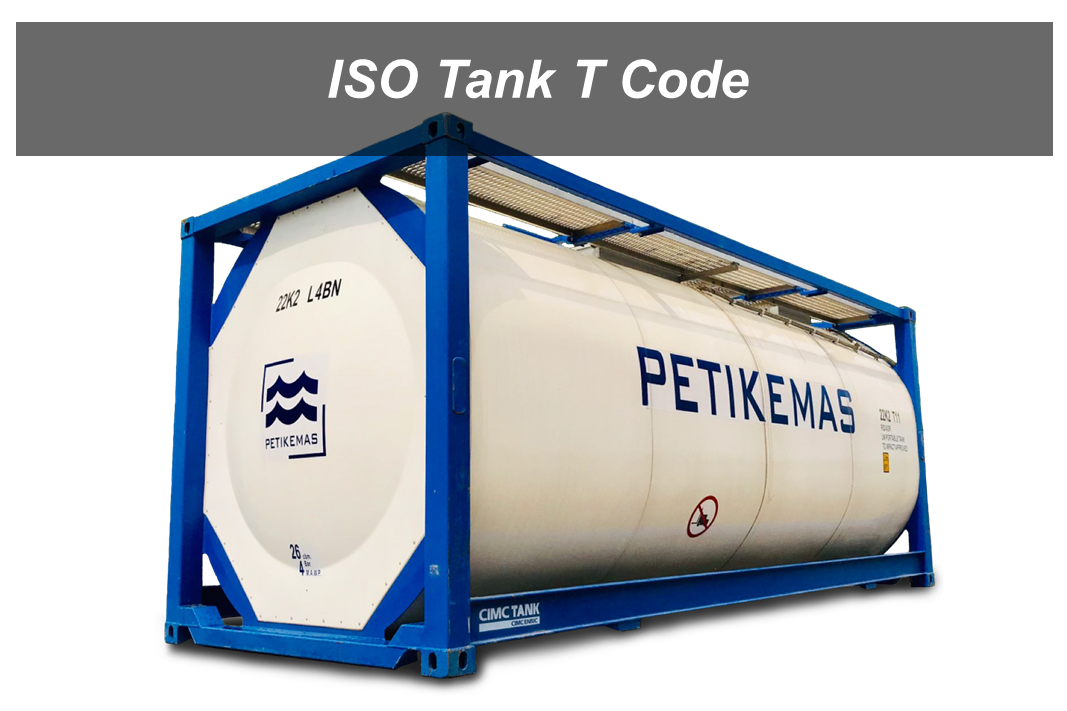ISO Tank T code
ISO Tank T codes are a classification system used to categorize and identify different types of ISO tank containers based on their design, construction, and intended use. These codes provide essential information about a tank’s suitability for transporting specific substances, ensuring safety and compliance with international regulations.
A typical T code consists of two parts:
Tank Size: This indicates the length and height of the tank container, usually in feet. For example, “22” in a T code represents a 20-foot long tank.
Tank Type: This identifies the tank’s construction, design features, and suitability for transporting certain substances. The T code number, such as T11, T50, T75, etc., corresponds to specific characteristics like test pressure, shell thickness, pressure relief devices, and outlet arrangement.
Here are some common T code types and their typical applications:
T1-T3: These codes are generally used for transporting non-hazardous liquids or low-pressure hazardous substances. They have lower test pressures and may have simpler design features.
T4-T7: These codes are commonly used for transporting higher-pressure hazardous substances, such as flammable liquids, toxic substances, and certain gases. They have thicker shells, higher test pressures, and more robust safety features.
T50: This code is specifically used for transporting liquefied gases, such as propane and butane. It has a higher test pressure and is designed to withstand the low temperatures associated with these substances.
T75: This code is used for transporting cryogenic liquids, like liquefied natural gas (LNG) and liquid oxygen. It has the highest test pressure and is designed to maintain extremely low temperatures.
T codes play a crucial role in the safe and efficient transportation of various substances. They ensure that the right type of tank container is used for each specific cargo, minimizing risks of accidents, spills, and environmental damage. By understanding T codes, shippers, carriers, and regulatory authorities can make informed decisions about the transportation of hazardous and non-hazardous materials.
ISO tanks applications:
Chemical Industry: Transportation of various chemicals, solvents, and acids.
Food and Beverage Industry: Transport of edible oils, juices, and other liquid food products.
Pharmaceutical Industry: Transportation of pharmaceutical ingredients and finished products.
Petrochemical Industry: Transport of petroleum products like crude oil, gasoline, and diesel.
Please contact us for more tank information





